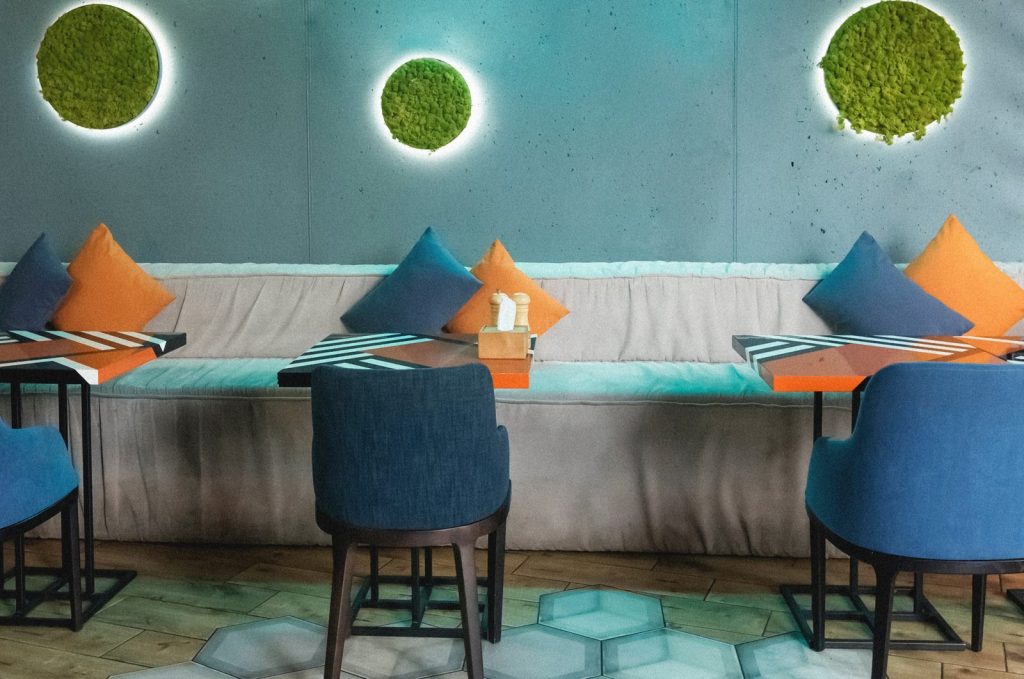
Restaurants affected by COVID-19 are getting creative with their customer acquisition strategies. Read our restaurant marketing tips for inspiration.
The restaurant industry has been singled out as one of the kinds of businesses most impacted by the coronavirus crisis. Government orders have closed dining rooms across the country. At the same time, many eateries have struggled to hang on with delivery and takeout — and some have even done quite well. Thus, it’s still not time to abandon the restaurant customer acquisition ideas that can bring in revenue now and help you emerge even stronger after the coronavirus outbreak finally passes.
Restaurant customer acquisition ideas for during and after coronavirus
Pre-coronavirus, the National Restaurant Association projected almost $900 billion in revenues for American restaurants in 2020. In March, out of about 700,000 jobs lost, according to the Bureau of Labor Statistics, half of the laid off employees came from the hospitality and restaurant industry. John Harkey Jr., the CEO of Consolidated Restaurant Operations, called this crisis a financial tsunami for the restaurant business. In any case, it’s clear that the restaurant customer acquisition and marketing plans that businesses had before the shut-down and stay-at-home orders will need to change quickly.
Consider online ordering, pickup, and delivery
With the growth of delivery services and consumers’ growing desire for convenience, delivered, takeout, or drive-through meals already accounted for a significant and growing percentage of overall restaurant revenue. Some kinds of restaurants, like pizza places and fast food, had already based a large portion of their business around delivery and takeout. Still, as various state and local governments began to close dining rooms, some restaurants had to scramble to put online ordering in place.
Sometimes, they did not have time to do much more than post a menu on their website and social sites and offer customers a phone number to call for curbside pickup orders. Still, depending upon the existing following these restaurants had, they still managed to keep a steady flow of customers.
The Orlando Sentinel reported that Orlando restaurant marketing has focused upon delivery to offset the loss of in-store business. They gained assistance in their efforts when Uber Eats, one of the largest delivery companies, waived their fees for any orders from independent restaurant businesses. Some of the larger chains already offered their own delivery, and they’ve also begun to stop charging fees as a gesture of goodwill to their patrons and an incentive for more people to order.
Exercise enlightened self interest
Pickup won’t work for all restaurants. Harkey, the CEO mentioned above, said that they operated most of their restaurants out of malls, and since the malls have closed, they can’t easily offer pickup and don’t really have the structure in place for deliveries. At the same time, delivery companies like DoorDash are heavily promoting an #OpenforDelivery campaign that pushed their services, the restaurants they work with, and even such competitors as GrubHub and Uber Eats.
Some restaurants have balked at using these kinds of services because of the extra delivery charges, but for restaurants without capacity to offer certain services, they might serve as a handy option in more ways than one. In addition to pushing national chains, they’ve also helped promote local restaurants they deliver from. Another example of related businesses sharing resources includes a group of businesses that agreed to donate a percentage of revenue to coronavirus-relief charities. As they all promote the relief effort and their own struggles to keep employees working, the digital presence of the charitable organization also promotes the companies that sponsor it.
Create compelling digital content for your restaurant
Certainly, you attracted diners because they loved your food. Even better, you may have retained business because your customers loved your facility and even you. With that in mind, you can develop content that helps strengthen your connection.
You could give your audience a behind-the-scenes video tour of your kitchen. Introduce them to your staff or let them watch you prepare one of your specialties. For example, one high-quality Italian restaurant shared an engaging recipe of the process they used to make, cut, and cook their homemade pasta. Another produced a series of cooking videos. Don’t overlook introducing your audience to your hard-working employees in order to remind customers that their patronage helps keep people working.
These kinds of content tend to do very well on Facebook, YouTube, and other social platforms. Don’t worry about giving away all of your secrets, you’re probably just going to make more of your audience hungry than eager to attempt your recipes. If you need extra revenue, you can even monetize your content with ads and sponsors on some platforms. Don’t worry if you don’t have any production experience. While you should strive for quality, you can find cell phone apps that will allow you to shoot, edit, and upload decent videos.
Don’t abandon marketing and advertising
Plenty of research from other downturns demonstrates the wisdom of maintaining a marketing budget. Business that do tend to weather the crisis and emerge even stronger. As with other hospitality businesses, you might need to adjust your restaurant customer acquisition strategy a bit, but you certainly should not abandon it.
Realistically, you may have to trim your budget, but you may find that some advertising platforms have grown less competitive as your competitors have done the same. You may also find you can do more with less as you focus upon satisfying existing demand within your community.
Geo-fencing for restaurants
Geo-fencing refers to setting a perimeter around your physical restaurant. For instance, you might use this technique to connect with people who are within the same shopping center, at work in a nearby essential business, or even just passing by your door. When they pass within the perimeter, this technology can alert them with a ping from a social network advertising platform, text, or message from a mobile app.
Geo-fencing for restaurants has proven to convert really well. It might offer you the perfect way to improve your takeout business now and entice more customers in the future after you have opened up your dining room again.
Retargeting
When people search online for the kind of takeout that you offer, why not concentrate on the hungry customers who have already visited your website or social platform in the past? Plenty of industry marketing analysts have suggested that businesses with limited marketing resources may enjoy better returns by focusing on ready-to-buy customers instead of trying to generate a new demand.
Build mutually beneficial relationships
One restaurant owner saw that hospital workers had an increasingly tough time accessing meals because cafeteria dining areas had closed and only essential staff could enter the building. He spoke with hospitals and found an opportunity to use his own catering vehicles as distribution points from outside the hospital, so hospital workers could pickup food and distribute it inside.
Besides generating an extra revenue stream, the restaurant had a chance to develop a lot of good will both at the hospital and within the community by featuring the story on social media and in press releases. They also began operating food trucks and started a GoFundMe campaign to help offset some extra costs, which also helped generate even more publicity.
I still need more marketing ideas for my restaurant
If you still need a few more tips, you can find plenty of good examples from other restaurants around the country. You might include some of these promotions in your advertising to help attract new customers without increasing operating expenses:
- You can save money on delivery costs by encouraging curbside pickup. You might incentivize customers to stop by with such incentives as a free dessert or appetizer.
- Incentivize their next orders by offering customers discount coupons and gift cards along with each pickup or delivery. Also, work to promote gift cards that customers can buy to save for later or give to others as gifts.
- Try offering family meal packs or kids-eat-free specials to help attract all those families who now have their children home from school.
- Consider simplifying your menu or even offering a fixed-price meal deal. You can also try rotating a smaller set of menu items to help you reduce inventory and provide encouragement for customers to try next week’s menu.
- Promote discount bulk orders that you package for easy storage and reheating. Some restaurants have even started offering meal kits that give customers the ingredients and instructions to duplicate some of their dishes at home.
Whatever you do to adjust your menus, hours, or business model, make certain that you keep employees and customers updated by posting updates to your website and social media. Also, let customers know about the steps you take to protect both them and employees. This current crisis will pass; however, most people will probably retain a heightened awareness about the many ways that germs and diseases can spread. You can help reassure them that you work hard to protect them now and will continue to do so in the future.
Restaurant marketing after the coronavirus starts now
The restaurant customer acquisition strategies that you develop today can help sustain your business through this tough time and help you emerge with a larger customer base than you had before. Once this crisis passes, and it will, diners will be eager to enjoy restaurants again, and you can make sure they intend to reward themselves with a trip to your dining room.




